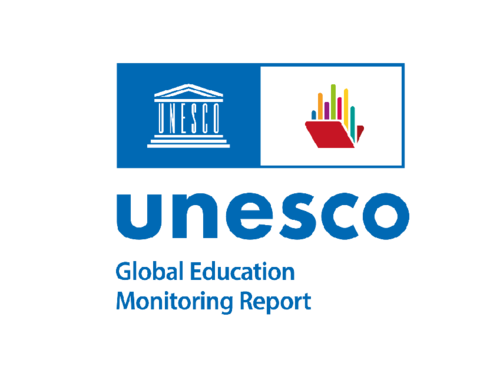The UNESCO Global Education Monitoring Report (GEM) evaluates annually, worldwide progress in implementing the Education Agenda 2030, which was adopted by the United Nations in September 2015 as an integral part of the Sustainable Development Goals (SDGs).
Global Education Monitoring Report 2017/18 "Accountability in Education".
The GEM Report 2017/18 is entitled "Accountability in Education". It shows which actors bear responsibility for a good education system and analyzes how all relevant actors can make education more effective, efficient and equitable. In this spirit, the GEM Report 2017/18 concludes with concrete recommendations for governments:
- Constructively hold schools and teachers accountable for supporting quality education;
- Allow democratic participation, respect media freedom, and establish independent institutions to handle complaints;
- Establish regulations that ensure education systems do not discriminate and ensure quality education;
- Make the right to education justiciable, which is currently not the case in 45 percent of countries worldwide.
Furthermore, the GEM Report shows that we are still far from achieving inclusive, quality and equitable education worldwide.
264 million children and young people between the age of 6 and 17 have no access to education. Even children who do attend school often do not complete it. Between 2010 and 2015, completion rates were just 83 percent in primary education (age 6-11), 69 percent in lower secondary education (age 12-14), and only 45 percent in upper secondary education (age 15-17).
In only 17 percent of all countries there is a one year of compulsory and free early childhood education. According to surveys in developing and emerging countries, between 2010 and 2015, three- to four-year-old children of the richest were five times more likely to have attended an early childhood education institution than the poorest.
Gender equity in primary education was achieved in only 66 percent of countries worldwide. In secondary education, the achievements are even lower. At the lower secondary level, gender equity has been achieved in only 45 percent of countries, and at the upper secondary level, in only 25 percent of countries worldwide. Although the illiteracy rate among young people has fallen by 27 percent since 2000, more than 100 million young people worldwide still have serious basic education deficits.
39 billion US dollars missing in education worldwide
39 billion U.S. dollars are missing every year worldwide for inclusive, high-quality, and equal-opportunity education, as advocated by UNESCO in its Education Agenda 2030.
On average, countries spend 4.7 percent of their gross domestic product or 14.1 percent of public funds on education. The education share of global development cooperation funds has been significantly reduced in recent years. In 2009, it was still 10 percent; in 2015, it was only 6.9 percent. However, an adequate legal framework and corresponding political strategies can only be implemented with sufficient funds, emphasize the authors of the GEM Report.
Background
In September 2015, the United Nations adopted Sustainable Development Goals (SDGs) and committed to implementing them by 2030. Goal 4, "By 2030, ensure inclusive, equitable and quality education for all and promote lifelong learning opportunities," derives the global education agenda for 2016 to 2030. UNESCO coordinates the implementation and is responsible for monitoring.


![[Translate to EN:] [Translate to EN:]](/fileadmin/_processed_/9/6/csm_education_2030_logo-page-001_7a6aecad7b.jpg)




![[Translate to EN:] Publikationen zu Bildung 2030](/fileadmin/_processed_/8/a/csm_Publikationen3_af52a7496d.jpg)